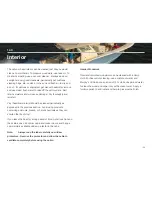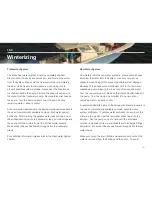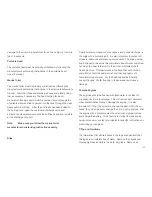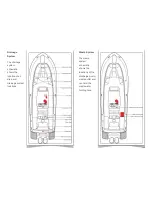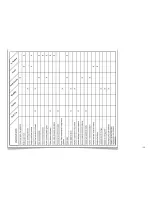
Freshwater System
The entire freshwater system must be completely drained.
Disconnect all hoses, check valves, etc. and blow all the water
from the system. Make sure the freshwater tank is completely
drained. Use only very low air pressure when doing this to
prevent possible system damage. Because of the check valve
mechanism built in the pump, blowing the lines will not remove
the water from the freshwater pump. Remove the outlet hose on
the pump. Turn the pump on and allow it to pump out any
remaining water....about a cupful.
A recommended alternative to the above-mentioned procedure is
the use of commercially available nontoxic, freshwater system
antifreeze. After draining the potable water tank and lines, pour
the antifreeze mixture into the freshwater tank, prime and operate
the pump until the mixture flows from all freshwater faucets.
Make sure antifreeze has flowed through all of the freshwater
drains.
For additional information please refer to the Freshwater System
chapter.
Raw Water System
Completely drain the raw water systems. Disconnect all hoses
and blow the water from the system. Use only very low air
pressure when doing this to prevent possible system damage.
Because of the check valve mechanism built in the raw water
washdown pump, blowing the lines will not remove the water
from the raw water pump. Remove the inlet and outlet hoses on
the pump. Turn the pump on and allow it to pump out any
remaining water....about a cupful.
A recommended alternative to the above-mentioned procedure is
the use of commercially available nontoxic, potable water
system antifreeze. If potable water antifreeze is used, pour the
mixture into a pail and put the raw water intake lines into the
solution. Run the pumps one at a time until the antifreeze
solution is visible at all raw water faucets and discharge fittings
and drains. Be sure antifreeze has flowed through all of the raw
water drains.
Make sure to run the stern fishbox macerator pump until all the
water is removed from the fishbox and the pump. To avoid
15.2
Winterizing
141
Summary of Contents for 320 LXF
Page 1: ...320 LXF Scout Boats OWNER MANUAL ...
Page 2: ...Chapter 1 Owner s Information Warranty Certification and Boat Information ...
Page 11: ...Chapter 2 Propulsion A guide to your boat s propulsion system ...
Page 32: ...Chapter 4 Fuel System An overview of the fuel system of your boat ...
Page 40: ...Chapter 5 Electrical System An overview of the electrical system of your boat ...
Page 54: ...Chapter 6 Fresh Water System An overview of the fresh water system of your boat ...
Page 59: ...Chapter 7 Raw Water System An overview of the raw water system of your boat ...
Page 65: ...Chapter 8 Drainage System An overview of the drainage system of your boat ...
Page 70: ...Chapter 9 Ventilation System An overview of the ventilation system of your boat ...
Page 73: ...Chapter 10 Exterior Equipment An overview of the exterior equipment on your boat ...
Page 83: ...Chapter 11 Interior Equipment An overview of the interior equipment on your boat ...
Page 88: ...Chapter 12 Safety Equipment An overview of the safety equipment on your boat ...
Page 99: ...Chapter 13 Operation A general guide to operating your boat ...
Page 124: ...Chapter 14 Routine Maintenance A guide to keeping your boat running in good condition ...
Page 147: ...Chapter 16 Appendix Reference documents logs and schematics for your boat ...
Page 154: ...153 ...
Page 155: ...154 ...
Page 156: ...155 ...
Page 157: ...156 ...
Page 159: ...158 ...
Page 160: ...159 ...
Page 162: ...161 ...








